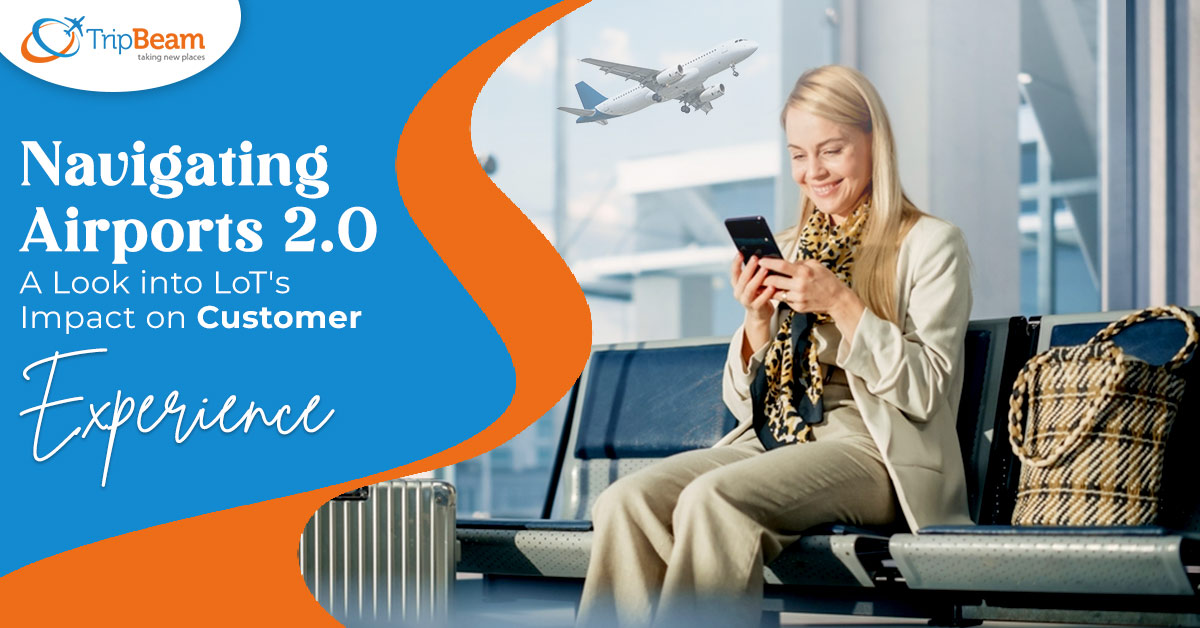
Despite the pandemic-induced reduction in air travel, the IATA Forecast Predicts 8.2 billion Air Travelers in 2037. To handle this exponential growth in the number of passengers in the coming years, airports and airlines will require the powerful capabilities of Airport 4.0 or Airport Digitalization. Thanks to airport IoT’s solutions and connectivity revolutions like 5G, the aviation industry will be able to adopt more agile and scalable IT and digital solutions to improve its operational efficiency and revenue streams. Airport IoT’s solutions are leading the way for efficient operations, visualized safety, and hyper-personalized customer experiences. They aren’t creating the most differentiated airports but the most revolutionary ones. You can also check the direct flights to Kochi from USA as it will provide multiple options for travel.
Traditional airports, which often drew flak for frustrating delays and annoying security checks, have been massively transformed into giant hubs of urban facilities that include everything from hospitality, and private retail, to live concerts. In addition, the influx of new-age customer technologies is further automating various aspects of passenger journeys and personalizing experiences, much to passengers’ delight. One such technology that’s poised to open up a world of proactive experiences is the Internet of Things (IoT), a breakthrough force gearing up to fundamentally change airport operations through smart sensors, connected devices, and analytics. This blog discusses the rise of IoT’s solutions and their impact on airport experiences, which are now becoming swift, engaging, ultra-personalized, and end-to-end compelling.
IoT airport solutions: The possibilities are endless
IDC’s Worldwide Semiannual Internet of Things Spending Guide, which was released recently, projects that the Asia-Pacific IoT market will grow gradually between 2021 and 2025, reaching $437 billion by then. Increased adoption of location tracking, facial recognition, remote working, cold chain logistics & vaccine tracking, video-centric applications, and 5G deployment in the region are expected to drive demand for IoT’s solutions. As a result, every industry, including aviation, will most likely benefit from IoT adoption.
In airports nowadays, more than 96% of travelers bring their smartphones. Increased smartphone usage and IoT innovation present airports with a strategic opportunity to drill down into user behaviors and use insights to better engage customers. Now, don’t furrow your brows just yet. However, the sprinkling of IoT adoption throughout airports is alleviating long-standing annoyances, like exasperating delays, lengthy lineups, and bothersome security checks. You can also check the direct flight tickets to Thiruvananthapuram as it will provide multiple options for travel.
Airports heavily investing in IoT can enhance traffic laws and assist travelers with indoor navigation using maps marked with Wi-Fi beacons. To track and trace luggage and lower the amount of misplaced bags, they are also utilizing sensors and electronic tags. Furthermore, facial recognition technology is streamlining security checks and reducing queues. These advancements result in significant cost and efficiency savings while also completely transforming the customer experience. But this is the very tip of the iceberg. The potential applications of IoT in airports are virtually limitless and are only beginning to emerge. If there is one thing wreaking havoc on the aviation landscape, it is outmoded airport experiences. We’ve covered a few use cases (areas) below where IoT’s can inform airports and usher in a new era of extremely efficient aviation.
1. Baggage Tracking & Passenger Tracking
IoT solutions in smart airports assist in overcoming the problem of lost baggage, which has long been a source of dissatisfaction among the flying public. It’s very simple to locate misplaced luggage thanks to IoT beacon technology and its continuous connectivity. These beacons track the location of bags in real-time across all touchpoints and integrate with the airport’s cellular network.
IoT is a potent force in airports that can simplify the intricate process of managing passengers. The use of biometric systems combined with in-built tracking mechanisms simplifies passenger tracking and allows airports to monitor real-time passenger footfall. Furthermore, IoT can create systems that recognize a passenger’s gait. If you want to look for different affordable flight options, visit Tripbeam.ca for cheap flight tickets from Canada to India.
2. IoT-enabled Asset Tracking
All around the world, airports need a range of resources to run efficiently and provide a better experience for travelers. Along with biometric technology, AI, and big data, airport authorities can incorporate modern airport IoT’s solutions to further streamline and strengthen asset tracking. Modern airports can apply IoT-enabled asset tracking solutions across their entire ecosystem and at every stage of the passenger journey, from the moment passengers enter the airport until they arrive at their destination. These IoT-driven innovations will provide aviation industry authorities with complete visibility and control over their assets and resources, resulting in a value that leads to the benefits of a smart airport. You can discover the greatest and most recent offers on reasonably priced and cozy international flights if you’re looking for last-minute international flight deals.
Also Read: 6 Major Gateway Airports For Travelers Flying From USA To India

